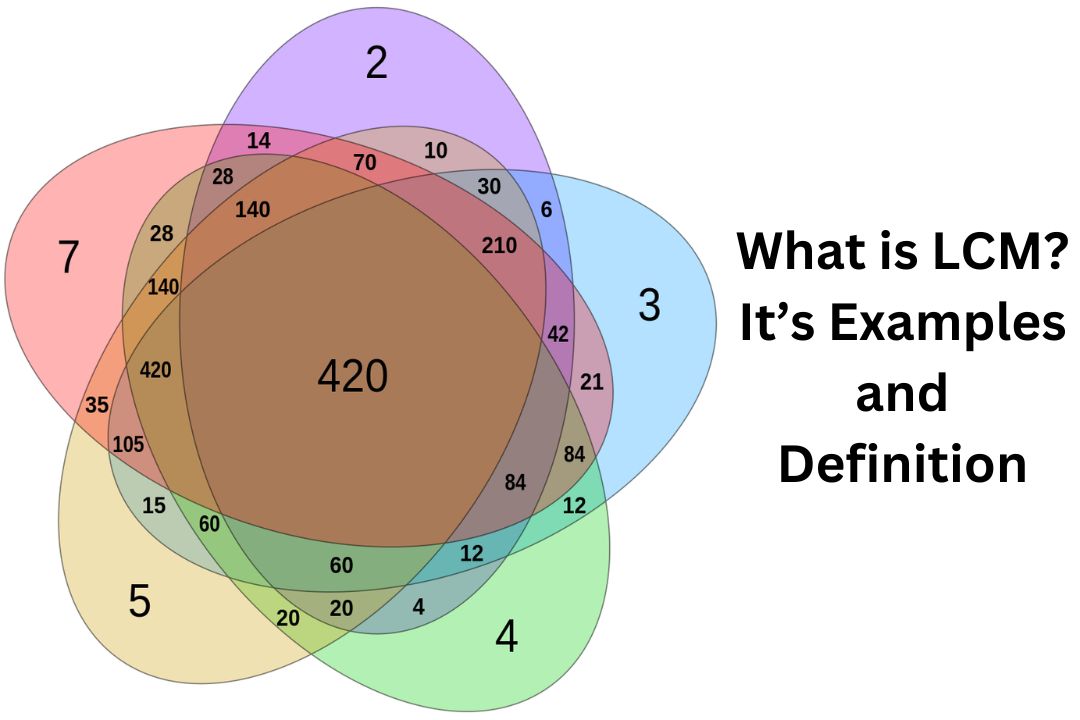Mathematics is a language that helps us describe patterns, quantify relationships, and predict the future. One of the fundamental concepts in this language is the Least Common Multiple (LCM). It’s a concept that often puzzles students, but once understood, it becomes a powerful tool in solving a wide range of problems.
The Least Common Multiple (LCM) is defined as the smallest positive integer that is divisible by two or more numbers without leaving a remainder. For example, if we take the numbers 4 and 5, their multiples are:
- Multiples of 4: 4, 8, 12, 16, 20, 24, …
- Multiples of 5: 5, 10, 15, 20, 25, 30, …
The common multiples of 4 and 5 are 20, 40, 60, … and so on. Out of these, the smallest number is 20, which means that the LCM of 4 and 5 is 20.
In mathematical terms, if we have two integers ( a ) and ( b ), their LCM is represented as ( \text{lcm}(a, b) ), and it satisfies the following condition:
lcm(a,b)×k=a×m=b×n
where ( k ), ( m ), and ( n ) are integers, and ( \text{lcm}(a, b) ) is the smallest such number that can be divided by both ( a ) and ( b ) without leaving a remainder.
The concept of LCM is particularly useful in operations involving fractions, where it helps to find the least common denominator (LCD), which simplifies the process of adding, subtracting, or comparing fractions
What is LCM?

The Least Common Multiple of two or more integers is the smallest integer that is a multiple of all the numbers in question. In other words, it’s the smallest number that all the numbers can divide into without leaving a remainder.
How to Calculate LCM?
There are several methods to calculate the LCM of two or more numbers:
Listing Multiples
- List the multiples of each number.
- Identify the smallest multiple that appears in all lists.
- Using our Online LCM Calculator
This method is straightforward but can be time-consuming for larger numbers.
Prime Factorization
- Break down each number into its prime factors.
- For each different prime factor, take the highest power of that factor found in any of the numbers.
- Multiply these together to get the LCM.
This method is more efficient, especially for larger numbers.
Using the Greatest Common Divisor (GCD)
The LCM of two numbers can also be found using their GCD with the formula:
LCM(a,b)=GCD(a,b)∣a×b∣
This method is efficient and particularly useful when dealing with only two numbers.
Examples and Solutions
Let’s look at an example to understand the concept better.
Example 1: LCM of 12 and 18
Listing Multiples Method:
- Multiples of 12: 12, 24, 36, 48, 60…
- Multiples of 18: 18, 36, 54, 72, 90…
The smallest common multiple is 36.
Prime Factorization Method:
- Prime factors of 12: (2^2 \times 3)
- Prime factors of 18: (2 \times 3^2)
Taking the highest powers: (2^2 \times 3^2 = 36)
Using GCD:
- GCD of 12 and 18 is 6.
- ( LCM(12, 18) = \frac{12 \times 18}{6} = 36 )
Example 2: LCM of 8, 9, and 21
Prime Factorization Method:
- Prime factors of 8: (2^3)
- Prime factors of 9: (3^2)
- Prime factors of 21: (3 \times 7)
Taking the highest powers: (2^3 \times 3^2 \times 7 = 504)
The LCM of 8, 9, and 21 is 504.
Conclusion
The LCM is more than just a mathematical exercise; it’s a concept that finds applications in areas such as adding fractions, computing the periodicity of events, and even in computer science for algorithm analysis. Understanding how to calculate the LCM is a skill that will serve you well throughout your mathematical journey.
Remember, practice makes perfect. Try calculating the LCM of different sets of numbers to become more comfortable with the concept.

